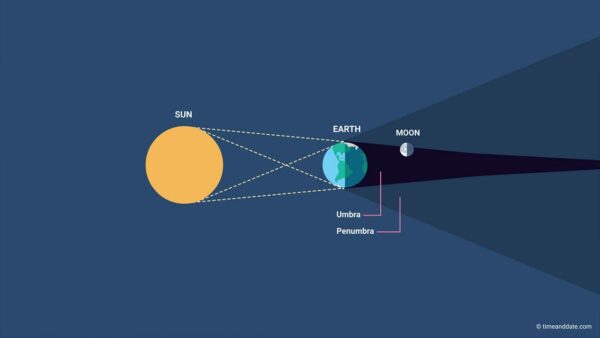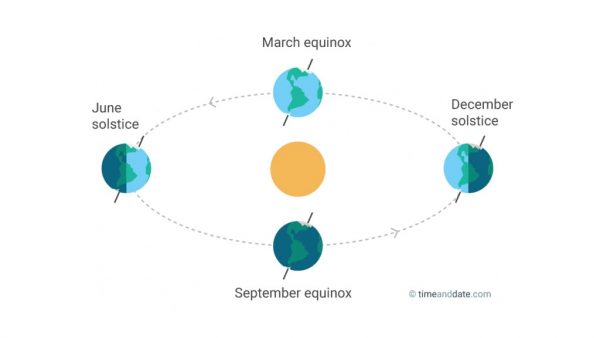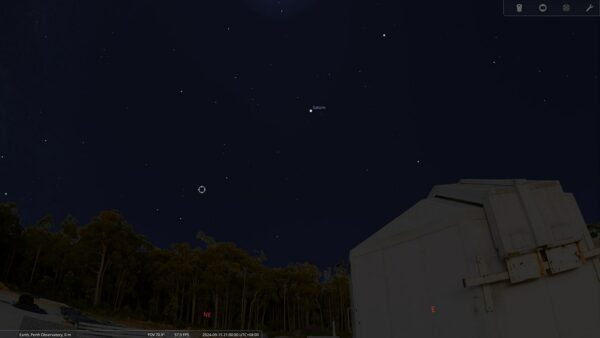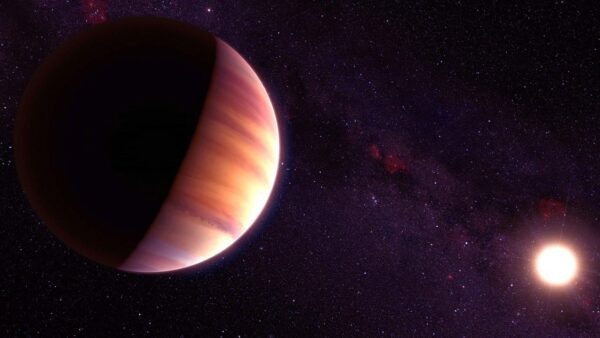Find out what to go out and look at this month
Planets:
As we move through September, the night sky offers a stunning array of planetary sightings and celestial events.
Visible very low in the east within the constellation of Leo (The Lion), Mercury will remain observable until mid-September before being lost in the Sun’s brilliance. Mark your calendars for Thursday, September 5th, when Mercury reaches its greatest elongation in the west, offering a prime viewing opportunity.Look for Venus low in the western sky during the early evening. In September, Venus moves through the constellation of Virgo (The Virgin). By month’s end, it will be positioned between Virgo and Libra (The Scales).
Rising in the east a few hours after midnight, Mars can be found in the constellation of Gemini (The Twins) throughout September. Jupiter is nestled between the horns of Taurus (The Bull) and is best viewed in the early morning, starting around midnight. Saturn graces the night sky in the constellation of Aquarius (The Water Bear) throughout September. Notably, Saturn reaches opposition on September 8th, where it’ll reach its closest point to Earth and directly opposite The Sun, providing an exceptional viewing window.
Located in Taurus above the Pleiades star cluster, Uranus is visible in the early morning hours this month. Neptune resides in the constellation of Pisces and the tail of Cetus (The Whale). It can be observed throughout the night in September, with its opposition occurring on September 21st.

|

|

|
| Planet | When It Rises Or Sets |
|---|---|
| Mercury | At the start of September, it sets at 05:40 am (AWST), and by the middle of the month, it’s in the Sun’s glare |
| Venus | At the start of September, it rises at 07:49 pm (AWST), and by the end of the month, it’ll rise at 08:43 pm (AWST) |
| Mars | At the start of September, it sets at 02:22 am (AWST), and by the end of the month, it’ll set at 01:40 pm (AWST) |
| Jupiter | At the start of September, it rises at 01:42 am (AWST), and by the end of the month, it’ll rise at 11:54 pm (AWST) |
| Saturn | At the start of September, it’ll be visible the whole night, and by the end of the month, it’ll set at 05:05 am (AWST) |
| Uranus | At the start of September, it rises at 00:01 am (AWST), and by the end of the month, it’ll rise at 10:02 pm (AWST) |
| Neptune | At the start of September, it rises at 07:22 pm (AWST), and by the end of the month, it’ll be viewable the whole night |
Conjunctions And Occultations:
Conjunctions involve object(s) in the Solar System and/or more distant objects, such as a star. It’s an apparent phenomenon in which multiple objects which aren’t close together appear close in the sky and it’s caused by the observer’s perspective.
In an occultation, an object passes across the line of sight between an observer and another object. A solar eclipse is an occultation of the Sun by the Moon.
- 05/09/24 – Conjunction of The Moon, and Venus (Where to look)
- 06/09/24 – Conjunction of The Moon, and Spica (Where to look)
- 09/09/24 – Conjunction of Mercury, and Regulus (Where to look)
- 10/09/24 – Conjunction of The Moon, and Antares (Where to look)
- 17/09/24 – Conjunction of The Moon and Saturn (Where to look)
- 23/09/24 – Conjunction of The Moon, Jupiter, Aldebaran, and Pleiades (Where to look)
- 24/09/24 – Conjunction of The Moon, Jupiter, and Elnath (Where to look)
- 26/09/24 – Conjunction of The Moon, Mars, Castor, and Pollux (Where to look)
- 29/09/24 – Conjunction of The Moon, and Regulus (Where to look)
Astronomical Events This Month:
Zodiacal Light Season Begins

Get ready for the start of the Zodiacal light season, commencing on September 1st. This mesmerising phenomenon occurs as the Sun approaches the September Equinox, which falls on September 22nd. During this time, sunlight scatters off dust particles dispersed along the ecliptic plane—the apparent path of the Sun’s motion on the celestial sphere as observed from Earth. The best opportunities to witness this enchanting pearly glow are during the spring and autumn seasons, particularly at dawn or dusk. This is because the steep angle of the ecliptic in relation to our horizon allows for optimal visibility. In the Southern Hemisphere, dusk is favoured during the September Equinox season, while in the Northern Hemisphere, it’s dawn. The opposite holds true near the March equinox.
To catch a glimpse of the zodiacal light, venture out approximately an hour after sunset or an hour before dawn. Choose a location with minimal light pollution, aiming for a dark site. Any interference from nearby cities or faint glows on the horizon can diminish the ethereal radiance of the zodiacal light. As you observe, you’ll notice a slender pyramid-shaped glow tracing the length of the ecliptic plane, creating a truly captivating display.
Partial Lunar Eclipse:
On Sunday, September 18th, a celestial spectacle is set to unfold. On this day, the Moon will gracefully position itself between the Earth and the Sun just slightly, giving rise to a Partial Lunar Eclipse that will be visible across vast swathes of the globe, including Europe, Much of Asia, Africa, North America, South America, Pacific, Atlantic, Indian Ocean, Arctic, Antarctica.
During a Partial Lunar Eclipse, the Earth takes its place between the Sun and the Full Moon, though their alignment is not absolute. This celestial ballet results in only a portion of the Moon’s visible surface slipping into the Earth’s inner shadow, known as the Umbra. As the last lunar eclipse of 2024.
| Event | UTC Time | Time in Perth (AWST) | Visible in Perth |
|---|---|---|---|
| Penumbral Eclipse begins | 18 Sep at 00:41:07 am | 18 Sep at 8:41:07 am | No, below the horizon |
| Partial Eclipse begins | 18 Sep at 02:12:58 am | 18 Sep at 10:12:58 am | No, below the horizon |
| Maximum Eclipse | 18 Sep at 02:44:18 am | 18 Sep at 10:44:18 am | No, below the horizon |
| Partial Eclipse ends | 18 Sep at 03:15:38 am | 18 Sep at 11:15:38 am | No, below the horizon |
| Penumbral Eclipse ends | 18 Sep at 04:47:27 am | 18 Sep at 12:47:27 pm | No, below the horizon |
Our friends at TimeandDate.com will be live-streaming the eclipse so we won’t miss out. To watch the live stream, you can click here.

|

|

|
The September Equinox

On Sunday, September 22nd, at 08:43 pm (AWST), we will witness the Southward Equinox, an astronomical event that signifies the onset of fall in the Northern Hemisphere and the arrival of spring in the Southern Hemisphere. At this precise moment, the Sun’s declination, as observed from Earth, reaches 0. The equinoctial points, where the celestial equator intersects with the imaginary path of the Sun known as the ecliptic, define this significant occurrence. Throughout the 21st century, the September Equinox will fall on either September 22nd or 23rd, until the year 2092 when it will consistently take place on September 21st every fourth year.
The term “Equinox” originates from Latin and translates to “equal nights.” During this event, day and night are nearly equal in duration across the globe, and the Sun rises precisely due east and sets due west as seen by an observer. The Full Moon nearest to the September Equinox holds the title of the “Harvest Moon” a period when farmers utilise the extended twilight to gather their crops. In 2024, the Harvest Moon will grace the sky on September 18th.
It’s worth noting the term “Equilux”, which distinguishes the true Equinox from the point when the duration of daylight matches the duration of night-time. Several factors contribute to this disparity, including the time it takes for the physical diameter of the Sun to clear the horizon, atmospheric refraction, and the observer’s precise location within their respective time zone. The Equilux occurs within a few days of either Equinox, accounting for these variations.
Comet C/2023 A3 (Tsuchinshan-ATLAS)
Astronomy enthusiasts are eagerly anticipating the arrival of Comet C/2023 A3 (Tsuchinshan-ATLAS). This comet follows a highly elongated orbit estimated to be 80,660 years inbound that takes it from the distant reaches of the solar system called the Oort cloud into the inner solar system, close to the Sun (Its perihelion) at 0.39 AU (58 million km) on 27th September 2024. This means this comet has not been seen from Earth in recorded history. The comet will pass just 0.47 AU (71 million km) from Earth on the 12th of October 2024.
The best viewing opportunities will be in the Southern Hemisphere. You’ll be able to see the comet before dawn in the east in late September and the first week of October. After the comet gets closest to the sun, it will swing around near Earth. But as it does so, it passes almost directly between Earth and the Sun, making it challenging to view until the middle of October as it reappears from the Sun’s glare, and you’ll be able to see it in the west after dusk for a few weeks. During these two months, the comet is expected to reach its peak brightness, potentially becoming visible to the naked eye under dark sky conditions.
To see it, it’s best to find Dark Skies locations, as light pollution from urban areas can significantly diminish the visibility of the comet. When the comet is viewable in the morning it’s best to see it in the Central Wheatbelt and away from big towns. When it reappears after dusk in the west, it’s best to go to the beaches away from streetlights, the lookouts along the Perth Hills escarpment, like Lion’s Lookout and the Zigzag Lookout. If you do have binoculars, it’s best to bring them just in case this comet goes the same way as Comet 12P/Pons-Brooks.

|

|

|
Things To Look At This Month:
51 Pegasi:
51 Pegasi (also known as 51 Peg and SAO 90896) is a Sun-like star situated 50 light-years away from Earth in the constellation of Pegasus. With an estimated age of 6.1 to 8.1 billion years, it is slightly older and 24% larger than our Sun. While this star might not typically be featured in a “must-see” article, it gained significant attention due to a remarkable object orbiting around it. On October 6th, 1995, Michel Mayor and Didier Queloz of the University of Geneva made an announcement in the journal Nature that forever changed our understanding of exoplanets. 51 Pegasi became the first Sun-like star known to harbour an exoplanet in its orbit. The exoplanet, initially designated as 51 Pegasi b and now officially named Dimidium, defied expectations with its peculiar characteristics. It boasted a size twice that of Jupiter while completing a full orbit around its star in a mere four days. This discovery served as the prototype for a new category of gas giants called Hot Jupiters. For astronomers who had presumed that our solar system represented the norm, this revelation was truly astounding and captured the imagination of budding stargazers, including my younger self.
The planet’s detection relied on the “Wobble Method,” a technique that utilized a sensitive spectroscope to measure the subtle yet regular velocity changes in the star’s spectral lines, equivalent to about 70 meters per second. These variations were attributed to the gravitational influence exerted by the planet located a mere 7 million kilometres from its host star. The significance of this achievement was recognized when Michel and Didier were awarded the 2019 Nobel Prize in Physics. Despite being twice the size of Jupiter, the planet exhibits a lower mass. This can be attributed to its superheated atmosphere, which expands into a dense but tenuous layer enveloping the planet. Beneath this layer, the gases constituting the planet’s composition reach such high temperatures that the planet emits a red glow. It is possible that silicate clouds exist within the planet’s atmosphere. Additionally, the planet is tidally locked, meaning it consistently presents the same face to its host star.

|

|
Pegasus Cluster:
The Pegasus Cluster, also known as Messier 15 (M15) and NGC 7078, is a captivating globular cluster located approximately 35,700 light-years away from Earth in the constellation of Pegasus (The Winged Divine Stallion). Jean-Dominique Maraldi first discovered it in 1746, and it is estimated to be an astounding 12.5 billion years old, making it one of the oldest known globular clusters. Spanning 175 light-years in diameter, it stands as one of the most densely packed clusters within the Milky Way galaxy. Within its core lies a remarkable phenomenon known as “core-collapse,” indicating a contraction process, and it exhibits a central density cusp surrounding a potential central black hole.
The Pegasus Cluster is a bustling neighbourhood for over 100,000 stars, showcasing a remarkable array of variable stars and pulsars, including a captivating double neutron star system. Additionally, it is home to the first planetary nebula discovered within a globular cluster back in 1928. Since then, only three others have been identified in globular clusters. When observing the Pegasus Cluster, it appears as a hazy star when viewed through binoculars or a small telescope. However, with larger aperture telescopes (at least 6″), individual stars within the cluster become discernible, revealing the stunning beauty and intricate details of this celestial jewel.

|

|
Helix Nebula:
The Helix Nebula, also known as NGC 7293, located in the constellation of Aquarius, is a mesmerising planetary nebula. Among the closest planetary nebulas to Earth at a distance of approximately 655 light-years, it shares a striking resemblance in appearance to nebulas such as the Cat’s Eye Nebula and the Ring Nebula. These nebulas possess similar size, age, and physical characteristics, akin to the Dumbbell Nebula, differing primarily in proximity and the equatorial viewing angle, which lends the Helix Nebula its unique appearance. In popular culture, it has been likened to the “Eye of Sauron” or the “Eye of God.”
Unlike the star-forming regions found in nebulae like The Orion Nebula (M42), a planetary nebula marks the late stage in the life cycle of a star. It occurs when a star expels a shell of material in a nova-style explosion. The intense ultraviolet radiation from the progenitor White Dwarf star causes the previously expelled shell of gas to fluoresce brilliantly, creating an emission nebula. From our perspective, the gases expelled from the star give the impression of a helix structure, as if we are peering down its winding path.
Spanning a modest 2.5 light-years, the expansion of the entire planetary nebula is estimated to have commenced around 6,560 years ago, with the inner disk beginning its expansion approximately 12,100 years ago. Spectroscopic observations indicate an expansion rate of 40 km/s for the outer ring and around 32 km/s for the inner disk. Thus, based on the ratio of size to expansion rate, the age of the nebula is estimated to be between 10 and 1200 years. Notably, the Helix Nebula was the first planetary nebula discovered to contain cometary knots. These impressive, tadpole-shaped structures are likely remnants of the star’s final stages, aptly named “cometary knots” due to their resemblance to comets, featuring luminous heads and ethereal tails. These knots are believed to result from the Rayleigh-Taylor instability. The ionised inner nebula, with its low density and high expansion velocity, propels the denser, slowly expanding, predominantly neutral material that was previously shed during the Asymptotic Giant Branch phase of the star’s evolution.

|

|
The Sculptor Galaxy:
The Sculptor Galaxy, also known as the Silver Coin Galaxy and NGC 253, is a barred galaxy located in the Sculptor constellation (The Sculptor’s Studio). Stretching approximately 67,000 light-years in width, it was first discovered by Caroline Herschel in 1783 while she was conducting a search for comets. Belonging to the Sculptor group of galaxies, which is centred around the south galactic pole and often referred to as “The South Polar Group,” this galaxy may be the closest group of galaxies beyond our own Local Group, situated approximately 11.5 million light-years away from Earth.
Renowned as a Starburst galaxy, NGC 253 boasts a multitude of stellar nurseries where a significant number of hot, young blue stars are continuously forming. This vibrant star formation activity is attributed to a past collision with a dwarf galaxy that occurred roughly 200 million years ago. As a consequence, the rate of star birth in NGC 253 is exceptionally high, leading to subsequent supernova explosions.
The intense radiation emitted by these young stars causes the surrounding hydrogen gas to radiate a vivid pink glow. NGC 253 is abundant in Wolf-Rayet stars, which originate as massive, hot stars with masses approximately 20 times that of the Sun and rapidly shed their hydrogen envelopes through high-velocity stellar winds. Additionally, the Silver Coin Galaxy exhibits a significant amount of dust, although it lacks clearly defined lanes similar to those observed in the Milky Way Galaxy.
With an apparent magnitude of 7.2, the Sculptor Galaxy is the second easiest galaxy to observe, surpassed only by the Andromeda Galaxy and excluding the Milky Way’s satellite galaxies, the Large and Small Magellanic Clouds. Under favourable viewing conditions, it can be discerned with binoculars, appearing approximately two-thirds the size of a full moon along its longest axis.

|

|
Phases Of The Moon:






